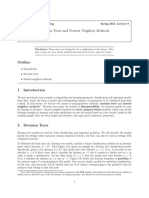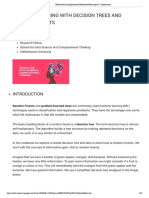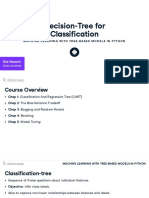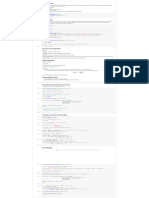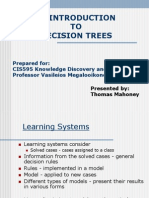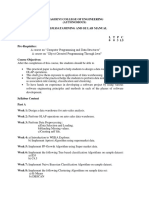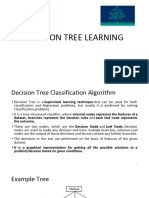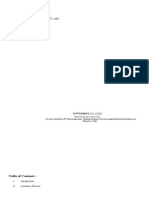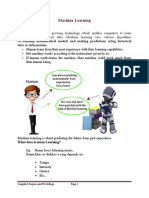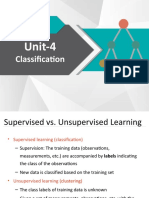0% found this document useful (0 votes)
83 views10 pages1.10. Decision Trees - Scikit-Learn 0.24.1 Documentation
Decision Trees (DTs) are a non-parametric supervised learning method used for classification and regression, creating models that predict target variable values through decision rules derived from data features. They offer advantages such as interpretability and minimal data preparation but can suffer from overfitting and instability. The document also discusses the implementation of DecisionTreeClassifier and DecisionTreeRegressor in scikit-learn, along with practical tips and various decision tree algorithms.
Uploaded by
AliCopyright
© © All Rights Reserved
We take content rights seriously. If you suspect this is your content, claim it here.
Available Formats
Download as PDF, TXT or read online on Scribd
0% found this document useful (0 votes)
83 views10 pages1.10. Decision Trees - Scikit-Learn 0.24.1 Documentation
Decision Trees (DTs) are a non-parametric supervised learning method used for classification and regression, creating models that predict target variable values through decision rules derived from data features. They offer advantages such as interpretability and minimal data preparation but can suffer from overfitting and instability. The document also discusses the implementation of DecisionTreeClassifier and DecisionTreeRegressor in scikit-learn, along with practical tips and various decision tree algorithms.
Uploaded by
AliCopyright
© © All Rights Reserved
We take content rights seriously. If you suspect this is your content, claim it here.
Available Formats
Download as PDF, TXT or read online on Scribd
/ 10



























